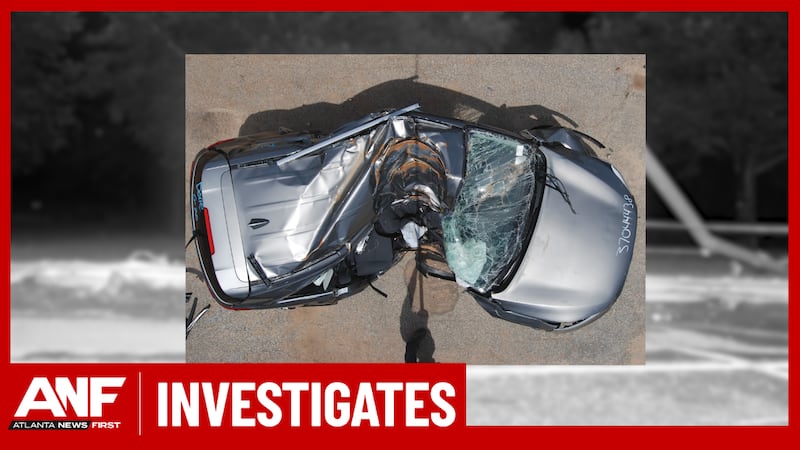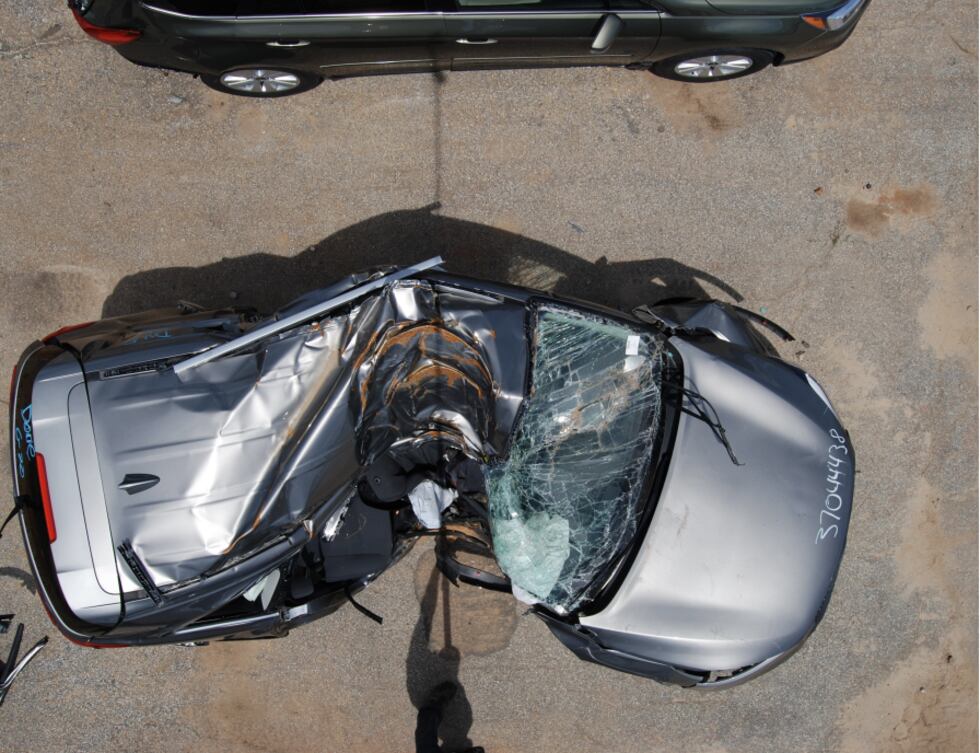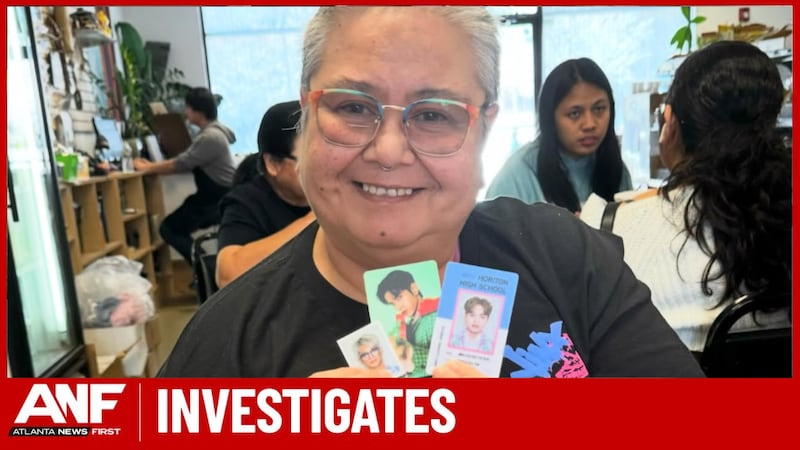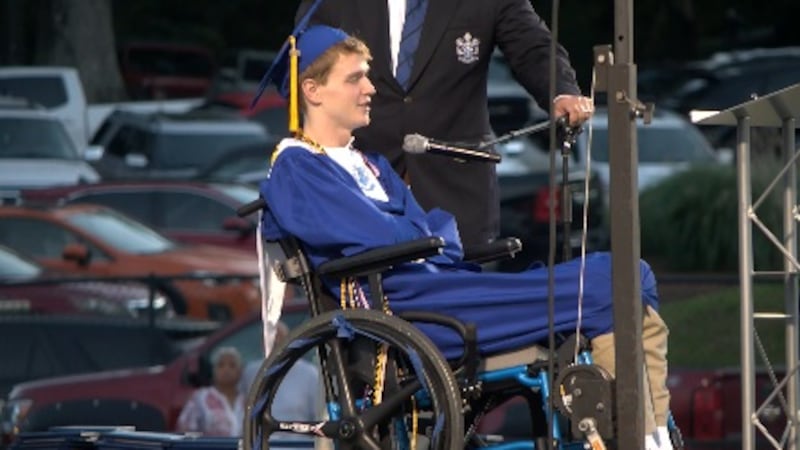‘They dropped the ball’ | Family settles $40 million lawsuit over nonfunctional guardrail
How Georgia’s struggle to repair guardrails cost lives and taxpayers’ millions

ATLANTA, Ga. (Atlanta News First) - Life was looking good for Catrice Hunter in 2018. The 30-year-old just landed a job promotion and a new place to live with her two daughters.
“Things were looking great for her,” said Clarissa Hunter, Catrice’s aunt. “And then, boom, the accident.”
On June 3, 2018, Catrice’s SUV went over a guardrail on I-85 in Atlanta and slammed into a steel pole on the other side, killing her.
When first responders arrived at the scene, even they were stunned by the damage. “There ain’t no way. She can’t be alive,” said an unidentified police officer heard on body camera video.
Images from Google’s Street View platform show the guardrail Catrice hit was damaged and deemed non-functional at least 10 months before the crash.
Guardrails are intended to keep drivers safe in case of an accident and to prevent vehicles from oncoming traffic or hitting something. But when the barriers are damaged or defective, they can’t protect drivers.
At the time, Martin Robbins Fence Company was the state contractor hired to repair damaged guardrails in the metro Atlanta area.
According to nearly two dozen letters and emails obtained from the Georgia Department of Transportation (GDOT), the state repeatedly notified the company for years it wasn’t making repairs within 21 days, required by its contract.
“The department is seeking a resolution to the failure of performance,” said Jason Moore, a GDOT district maintenance manager in a letter sent to Martin-Robins on April 17, 2018, 47 days before Hunter’s crash.

“The department is concerned with Martin Robbin’s performance with repairing attenuators, guardrail and cable barriers in the time frame stated within the contracts,” said Moore in another letter to the company sent in September 2016.
“Catrice is dead and deceased because they dropped the ball,” said Clarissa.
“One of the most egregious facts of this case to me was that from day one, all of the defendants itted that they didn’t do what they were supposed to do,” said Matt Kahn, one of the attorneys who represented Catrice’s family in a lawsuit.
While Martin Robbins, GDOT and another state contractor did not it liability, it agreed to pay $40 million to Catrice’s family and a enger who survived as part of a settlement. The state paid $3 million of that amount.
Five years after Catrice’s death, and taxpayers on the hook for millions of dollars, an Atlanta News First investigation uncovered the state continues to struggle meeting its guardrail repair deadline.
According to state repair logs, of the 370 defective guardrails identified in a December 2023 GDOT report, more than a third of the repairs, or 33%, took longer than the required 21-day time frame.
Some of the repairs took more than 100 days.
The December report identified guardrails that were reconstructed using multiple manufacturer parts, sometimes colloquially called “Frankenstein Guardrails.”
“I’d love to tell you I was surprised, but I’m not. And what we’ve seen of the industry and the way it operates is frankly not encouraging,” said Jeb Butler, another attorney who represented Hunter’s family.
Click HERE to report a damaged guardrail to the Georgia Department of Transportation.
GDOT Responds
Russell McMurry is the commissioner of the Georgia Department of Transportation. While he declined interview requests for this story, a spokesperson provided a statement to address the settlement and the Atlanta News First’s findings.
“Any injury or fatality that occurs on Georgia roadways is devastating to all concerned. We at Georgia DOT place the highest priority on safety and aim to make our roadways as safe as possible,” said Natalie Dale, GDOT’s spokesperson in an email.
Dale also said guardrail contractors have faced supply chain issues, workforce shortages and increased liability over the past decade, which contribute to repair delays.
In a letter to the transportation agency in May 2018, Martin Robbins recognized the problem impacting repair delays.
“Another issue we are faced with is it is taking three to four weeks to get our inventory orders filled. While we maintain a large inventory, this is becoming an issue for some items,” said Tommy Martin, the company’s president.
In September 2018, GDOT notified Martin Robbins that it would not be renewing its contract, but four years later, it rehired the company to repair guardrails in a different part of the state. The current contract is worth $1.8 million.
Since the state rehired Martin Robbins 2020, GDOT says it has met the 21-day deadline 80 percent of the time.

Martin Robbins Responds
In a statement sent to Atlanta News First, Martin Robbins says repair delays in 2018 were due to an unexpected dramatic rise in repair requests because GDOT hired a contractor to identify damaged guardrails without telling the company.
Before then, Martin Robins says GDOT largely relied on its own employees, citizens and law enforcement to call in damage when they noticed it. That changed in 2018 when GDOT hired the contractor to drive around searching of damaged guardrails.
“Without warning, though, in March 2018, GDOT’s repair requests exploded. Where it had previously requested 50 per month, in a single week GDOT requested more than 150 repairs. It was only then Martin Robbins learned about GDOT hiring the third-party to seek out repairs,” said Tommy Martin, the company’s president in an email.
During that time, Martin says his team struggled to meet repair deadlines.
“Additionally, GDOT had crews in other areas of Georgia that routinely perform guardrail repair. Yet they never asked those crews to come assist in the metro Atlanta area,” said Martin
Atlanta News First provided detailed records identifying the repair delays to state Senator Greg Dolezal and Representative Rick Jasperse. Both chair transportation committees in the General Assembly, which have oversight of GDOT.
Both also declined to provide a response about the guardrail repair delays or the multi-million-dollar settlement.
Catrice’s aunt hopes the agency and lawmakers will take guardrail repairs more seriously.
“I hope and pray that another family doesn’t have to go through what we’ve had to go through,” said Clarissa.
If there’s something you would like Atlanta News First Investigative Reporter Andy Pierrotti to look into, email [email protected].
Copyright 2024 WANF. All rights reserved.










